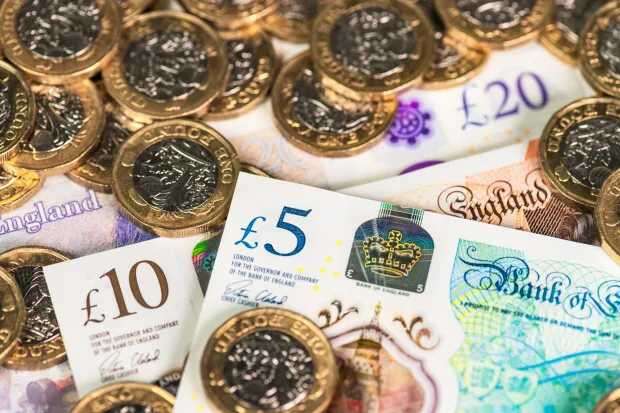RISHI Sunak has pledged to cut taxes as he unveiled his Conservative Party election manifesto this morning.
The Prime Minister's offer includes a flagship cut to National Insurance (NI) by a further 2p.


If elected, the government would slash the main rate of primary Class 1 NI contributions (NICs) from 8% to 6% by 2027.
The Treasury has already cut Class 1 NICs twice this year, from 12% to 10% in January and down to 8% in April, as part of its long-term plan to abolish the tax entirely.
It means a worker with an average annual salary of £35,000 will be £449 a year better off.
 Date millions on Universal Credit and benefits will get a pay rise this year
Date millions on Universal Credit and benefits will get a pay rise this year
In total, 29million workers will see their pay rise go up if the policy was to be greenlit.
The Prime Minister also confirmed plans to abolish the main rate of National Insurance for the self-employed.
Known as Class 4 NICs, these are paid by the self-employed whose businesses turn a profit of £12,570 or more a year.
If elected, the government is committed to axing Class 4 NICs by the end of the next Parliament.
It comes as Rishi Sunak has also pledged to abolish stamp duty for first-time buyers, with up to 200,000 Brits set to benefit.
Mr Sunak’s manifesto includes pledges to
- PROTECT pensioners from ever paying income tax with a new Triple Lock Plus
- GIVE working parents 30 hours a week free childcare by September next year
- CREATE a mandatory new form of national service for 18-year-olds
- IMPOSE a ban on any new green levies that makes Brits pay for Net Zero
- BAN mobile phones in classrooms as well as clamping down on sex education
- BOOSTING defence spending to 2.5 per cent of GDP by 2030
- SLAP an annual cap on legal migration while pledging immediate Rwanda flights
- CUT stamp duty on houses for first time buyers up to £425,000
Follow our live blog on the Conservative Party's manifesto launch to find out what else has been confirmed.
How much better off will I be?
How much better off you'll be after another 2p cut to NICs depends on how much you earn.
Data from Quilter recently shared with The Sun shows what workers on specific salaries will see their pay rise to.
For example, a worker on £25,000 a year will see their income boosted by £249 a year.
 Hunt doubles down on no tax cuts despite the BoE’s less gloomy predictions
Hunt doubles down on no tax cuts despite the BoE’s less gloomy predictions
Meanwhile, someone on an annual salary of £50,000 will see their pay go up by £749 a year.
However, those earning below £12,570 a year won't be affected.
This is because you don't pay any NI if your income is set below this level.
Sarah Coles, head of personal finance at Hargreaves Lansdown, said: "An NI cut would offer a tax break to hard-pressed workers, but they would still be squeezed horribly by the frozen tax thresholds.
"It means that as people's pay rises, they automatically pay more income tax, and risk being pushed into a higher tax bracket.
"Already 2.1million people have been dragged into paying income tax because of it.
"Another NI cut would bring down the rate of tax they pay but doesn't unwind the fact they’re paying this tax in the first place.
"It means that even while there’s all this talk of tax cuts, there’s every chance you could end up handing over more of your income to the taxman in future."
The abolition of Class 4 NICs for the self-employed would mean that these workers no longer get taxes on their profits.
Currently, if your profits are more than £12,570 a year, you must pay Class 4 NICs.
For tax year 2024 to 2025 it means you'll have to pay:
- 6% on profits between £12,570 and £50,270
- 2% on profits over £50,270
How have National Insurance rates changed?
The threshold for National Insurance payments is currently £12,570 a year for employed workers and £6,725 for self-employed people.
A change in April 2022 saw millions of workers paying 1.25% more NI, but that hike was reversed from November of the same year, saving workers £330 a year on average.
Rates fell from 13.25% to 12%.
The Treasury then cut the same rate of NICs from 12% to 10% in January 2024 following an announcement in the 2023 Autumn Statement.
In April 2024, the Government slashed the main rate of Class 1 NICs from 10% to 8%.
Most people now pay 8% NICs on any earnings between £242 and £967 a week (or £1,048 to £4,189 a month).
You also have to pay 2% on anything you earn over £967 a week (or £4,189 per month).
Those earning less than these amounts do not have to pay any National Insurance.
Of course, the exact amount you pay will depend on how much you earn, as it's a percentage of earnings between these amounts.
If you're employed, the company you work for deducts the tax and pays it to HMRC for you.



































